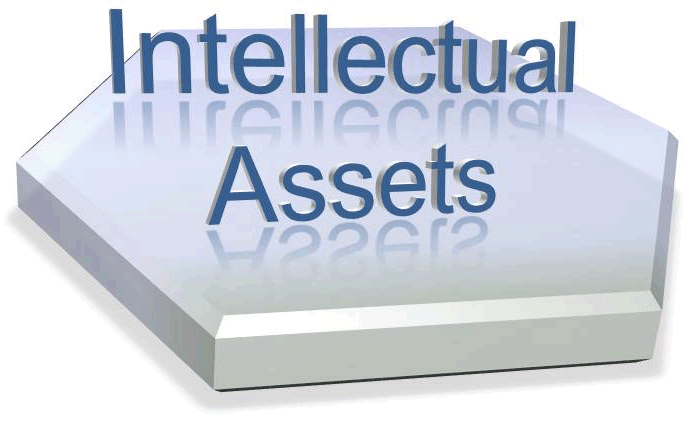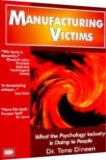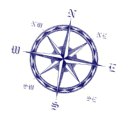|

|
Not "What"... But “How”
|
"Culture is the combined perceptions, attitudes, thinking, and behaviors
that people adapt to within organizations.
Within a Culture...
A rose is a rose and by any other name, it is still a rose.
However, the beautiful pedals of productivity do not cover up
the harshness or cruelty of the thorns."
~ Dr. Richard Jorgensen ~
|
|
|
|
| |

To Create Your Desired Culture
You Must Convert
Your Intellectual Property
Into Intellectual Assets
So That It Can Be Implemented
As Part of Your Culture.
~ Dr. Richard Jorgensen ~
If the organizational culture supports trust based interpersonal skills, behaviors and leadership, the organization achieves productive and fulfilling team relationships.
If the organizational culture supports fear based interpersonal skills, behaviors and leadership, the organization gets unproductive and dysfunctional team relationships. We all bring our well-developed patterns of behavior into team relationships. These patterns are the result of our beliefs, values, and perceptions.
|
|
|
| |
WHAT Is Your Organizational Culture Costing You?
HOW are You Going to CHANGE it?
The Organizational Culture Value-ation process is designed to measure the cultural milieu creating a culture responsiveness to change as it redefines and raises the bar for top performing organizations.
The Organizational Culture Value-ation process assists organizations in identifying employees with trust based and fear based interpersonal skills, behaviors and leadership with the advantage of an integrated system and technology to create lasting change.
|
|
| |
The benefits to the organization in creating and enhancing trust based interpersonal skills, behaviors and leadership with existing employees through the proven integrated system results in:
-
Improved Creativity & Productivity
-
Improved Conflict Resolution
-
Reduced Resistance to Implementing Change
-
Improvements in Internal Efficiency
-
Improved Vendor Relationships & Customer Relationships
-
Increased Sales
-
Cost Reduction
-
Increased Profitability
To determine if your organization would benefit from this technology and proven approach, the first step of a five step process of the Organizational Culture Value-ation is available.
|
The Five Step Process of the
Organizational Culture Value-ation
Step 1: Organizational Culture Value-ation Indicator
Step 2: Results Consultation
Step 3: Creating Organizational Cultures
Responsive to Change eMods
Step 4: Organizational Culture Value-ation Shift
Step 5: Lasting Change
A. Implementation process
B. Evaluation at 90 days, 180 days and 1 year
|
The results of the value-ation process enable you to transform your culture into a top performing culture. You will be able to determine pre-training, new training, re-training and cross-training needs. We provide the means for your business to excel in a contracting economy.
|
|
|
Some
Kind of Different
How to Measure
Your Good Will
Capture
Your Intellectual Assets
Create
Organizational Cultures
Responsive to Change
A Powerful Organizational
Value-ation Process that
enables management to:
Click for
Comparison chart
|
Maslow’s (1954) hierarchy of needs is fundamental in understanding change in individuals and organizations. An individual’s needs are fulfilled from the lowest level in order to advance to the next level. When our needs are not fulfilled we enter into a state of fear. Fear automatically destroys creativity, discovery, growth, teamwork, morale and organizational performance.
Fear operates below the surface, in the invisible world of the hidden culture that runs silently throughout the organization. Fear is a landmine of uncertainty, which kills our courage to be heard, confidence in our competencies and overtime produces a culture steeped in dysfunction that infects individuals in all levels of the organization. Fear becomes visible in the form of resistance
and control.
"To discover in oneself a great talent can certainly bring exhilaration, but it also brings a fear of the dangers and responsibilities and duties of being a leader and of being all alone" (Abraham Maslow, Toward a Psychology of Being, John Wiley & Sons, 1999, pp. 72).
|
| |
|
What Makes Our
Organizational Culture Value-ation Unique?
What makes the value-ation process unique is the focus on organizational factors that genuinely identify the cultural milieu. We focus on the whole organization first and on demonstrating lasting change.
Solutions are rarely if ever part of the package. There are over 3,000 varieties of assessment tools in the marketplace. How many come complete with solutions so that once the problems are identified, solutions are applied immediately?
|
|
|
|
Could it Be That
Psychology and Psychological Testing
Gets a Failing grade?
Psychology was invented in the past 100 years. Psychoanalysts and psychotherapists did not exist before Freud.
|
Let’s look at how we are doing according to Bristol University.
- The average 25-year-old is up to 5 times more likely to be depressed as 50 years ago
- Adults are 28 times more likely to have been victims of violent crime as in 1953
- Medicating children has been on the rise since 1990
- Children are suffering unprecedented epidemic of behavioral problems
|
 |
 |
Dr. Tana Dineen author of “Manufacturing Victims,” skillfully takes the Psychology industry to task for:
- Destroying families
- Promoting hostile views of men and women
- Promoting distrust and suspicion
- Missing Science
Dineen also references that "by 1995, 46% of the U.S. population had seen a mental health professional," who are consequently receiving these kind of results.
|
|
We have created an invented world of psychobabble, from paranoia to penis envy, and from ID to identity crisis to inferiority complex. With a rise of over 200 contradictory therapies by 1990 we have been seduced by Spock to Skinner, to hypnotherapy to access a person’s questionable if not fabricated unremembered childhood abuse, or for some it is the healing of their "wounded inner child”.
In addition, we have created a plethora of over 3,000 assessment instruments from achievement, to intelligence, occupational, and personality.
Regrettably, there are many psychological assessments in extensive use that are accepted as being scientific. The Myers-Briggs and the Enneagram are good examples which are often used in educational and corporate and business settings in pseudoscience and psychobabble and have been purported to be as about as much value as newspaper astrology.
So why, with all these approaches are there more behavioral problems, more reported accounts of depression and psychotherapeutic drugs taken in copious quantities?
Psychology has failed big-time and even Dr. Tina Dineen, who slams the psychological community with well argued criticism is weak on proposing positive solutions.
What is interesting especially in examining organizational culture is to keep in mind that people create the environment and the environment creates people. Add to that, the traditional assessments and the very nature of how they are constructed are created as "events" rather than a part of a process. These two major problems with assessments are then magnified by the lack of “what to do” about the identified problems.
They do not measure the environment nor offer a comprehensive process of providing solutions to what they measure.
|
Ready for a New Paradigm?
|
| |
|
The Organizational Culture Value-ation
comes complete with revolutionary technology called
eMod Learning Systems ("eMods") powered by the Personal Learning Technology (PLT) Platform
which implements a comprehensive process for overcoming learning challenges
so lasting change and lasting results occur.
The Five Step Process of the Organizational Culture Value-ation Process Includes:
Step 1: The Organizational Culture Value-ation Indicator assesses the culture and the individuals identifying constructive and destructive patterns of behavior that are costing an organization time, money and overall productivity from the customer's, employee's and leadership's perspective.
Step 2: Results Consultation provides an in depth qualitative and quantitative examination of your organization with findings that will direct the decisions and actions necessary for change. The profiles for your organization and individuals will reveal organizational patterns including:
- Attitude to Change & Improvement
- Conflict Struggles
- Communication
- Action and Decisions
- Achievement & Priorities
- Customer Service
- Organizational Character
- Organizational Structure
- Organizational Working Environment & Relationships
- Leader Relationships
|
|
| |
Step 3: The Creating Organizational Cultures Responsive to Change eMod created by Richard Jorgensen, Ph.D. (hc) provides the “How” that has been missing for lasting individual and organizational change.
This eMod plunges into the core of organizational culture and the importance of change, offering readers logical explanations and a newfound awareness for equality. Dr. Jorgensen's practical tools, rooted in 25 years of solid research, have created powerful lessons in the understanding of sub-cultures, within our own culture.
Life is all about change. We go from being in balance, to being out of balance, to re-establishing balance again in a new and different way. A modern day treasure full of wisdom, insight, and practical advice, this eMod will continue to change the way you look at your life in accordance with timeless philosophies being applied to current situations.
Applying these philosophies can transform businesses, schools, families, and organizations overnight, offering authentic success through all phases of evolution. Discover the innate strengths and abilities that lie within your personal and professional cultures.
In creating a foundation for organizational cultures, employees will learn to:
- Take responsibility:
- Make decisions
- Take action
- Have accountability
- Identify and stop manipulative behavior
- Identify and correct authority issues by learning the difference between structural authority and emotional authority.
- Use tools to create teamwork through interdependency not independency
Step 4: Organizational Culture Value-ation Shift provides a comprehensive comparison of the quantitative and qualitative shifts of organizational culture patterns for individuals and the organization, as a direct measurable result of the “Creating Organizational Cultures Responsive to Change” eMod program. Categories of comparison include:
- Attitude to Change & Improvement
- Conflict Struggles
- Communication
- Action and Decisions
- Achievement & Priorities
- Customer Service
- Organizational Character
- Organizational Structure
- Organizational Working Environment & Relationships
- Leader Relationships
Step 5: Lasting Change. According to Dr. Jorgensen, "Before there can be change in the organizational culture, all people involved must come to a collective agreement to implement and support new programs. Without this foundation, the very nature of the culture that you wish to change will destroy change. Individuals cannot change without the culture changing and the culture change cannot occur without the
individual support." This proven eMod accomplishes this very objective.
- Implementation process
- Evaluation at 90 days, 180 days and 1 year
The Organizational Culture Value-ation Indicator process reveals organizational patterns, revolutionary technology and programs that create organizational cultures responsive to change with advanced learning systems, feedback assessments and online facilitated interaction.
Organizations and individuals are provided quantitative and qualitative results throughout the process measuring the lasting changes and results.
|
Contact Us
Culture Value-ation
Not "What" ... But "How"
|
|










